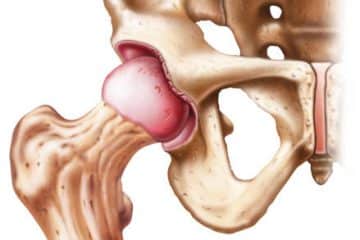Bunion Surgery | Cost | Indications | Procedure
Overview

Bunion Surgery Cost
A bunion, also known as Hallux abducto valgus in the medical field, is a bulge from the outside of the big toe that develops over time. Years of strain on the big toe joint cause this toe condition.
The toe joint gradually becomes misaligned, resulting in a bony protrusion.
Bunions are a common medical problem and most people don’t have any or very slight troubles. Others’ feet become progressively misshapen and painful, making it more difficult to move.
Surgery is really the only appropriate cure for a bunion deformity that causes serious symptoms. The method of surgery that is best for you will be determined by a number of criteria, including how much the location of the bones in your foot has altered.
What is Bunion Surgery?
Soft tissue and bone are excised or realigned by a cut made at the top or side of the big toe. This is taken to minimize discomfort and return the joint to its original position. Bunions can be treated using various types of surgeries.
The majority of techniques involve adjusting the tendon, ligament, and joint capsule to improve the big toe’s alignment.

Bunion Surgery
Types of Bunion Surgery
Removal of part of the bone (osteotomy). The part that is removed in this procedure depends on the type and severity of your bunion deformity.
Fusion (arthrodesis). It’s a procedure to fix the big toe joint and prevent more progression of the deformity.
Artificial joint implantation (arthroplasty). It is the last option for those who have very severe debleating deformities.
Your specialist will provide you with these options and discuss which type is suitable for your condition.
Indications of Bunion Surgery
The management of bunion deformity begins with conservative treatments, with surgery provided for those who have:
- Severe and agonizing foot pain
- Their deformity interferes with daily activity performance
Contraindications of Bunion Surgery
Few issues interfere with this procedure and include:
- Severe active infections
- Insufficient blood supply Such as Diabetics.
- Unmotivated patient
- Patient with unreasonable hopes
How Bunion Surgery is Performed?
Preparing for the Surgery
The patient should undergo a few tests before the surgery. In addition, he has to adjust his medications If they interfere with performing the procedure.
Anesthesia
When you go to the theater, you will be given an anesthetic as you prefer.
There are various types of anesthesia and your choice depends on whether you want to go asleep or not.
- Local anesthesia
- Spinal anesthesia
- Nerve block
- General block. It is the only type that makes you go asleep
The technique
The surgeon will make a cut at the top of your apparent bunion prominence and enter the area of deformity.
According to various types of bunion procedures, the surgeon will do the following:
Osteotomy
there are different types of osteotomies (akin, chevron, and scarf) that entail surgical excision and straightening of the toe joint. Depending on the patient’s symptoms, the orthopedist determines the best surgical operation.
Tendons and ligaments repair
It’s possible that the tissues around the big toe are stiffer on one part and softer on the other, resulting in inequality.
The orthopedist will strengthen loose tissue by shortening it and ease tight tissue by lengthening it.
Fixation (arthrodesis)
The injured bones are fused surgically, then pins, wires, or plates are inserted to hold the joint while it heals.
How Long Does Bunion Surgery Last?
Based on the severity of the bunion and the procedures required to treat it, the procedure might take anywhere from 30 min to 3 hours.
Risks of Bunion Surgery
Bunion surgery carries the same complications as any other surgical technique. These are uncommon and usually manageable; however, they may restrict or prolong your complete recovery.
The following are possible risks with bunion surgery:
- Infection
- Nerve damage
- Inability to alleviate pain
- Failure of the bone to heal completely
- Tight big toe
- Bunion relapse
Outcomes of Bunion Surgery
Most individuals who have bunion surgery report a reduction in foot pain as well as an improved big toe alignment. The duration of your recovery will be determined by the surgeries performed and how closely you adhere to your doctor’s advice.
Because a tight-fitting shoe is a frequent source of bunion deformities, switching to that type of shoe may trigger your bunion to reappear. When it comes to correct shoe-fitting, always obey your doctor’s advice.
See Also
References
https://www.ncbi.nlm.nih.gov/books/NBK513142/
https://www.ncbi.nlm.nih.gov/pmc/articles/PMC2907787/
https://emedicine.medscape.com/article/1235796-treatment
https://pubmed.ncbi.nlm.nih.gov/19505643/

Dr.Sharif Samir Alijla, is a general medical doctor and a well-rounded professional that cares and treats patients from Palestine. I participated in many medical studies and conferences, I've launched a range of community initiatives and taken part in a variety of leadership and change training programs. I worked as an author for many medical websites such as TebFact . I specialized in writing medical articles from authoritative and updated sources in a simple and smooth the way for the reader.



